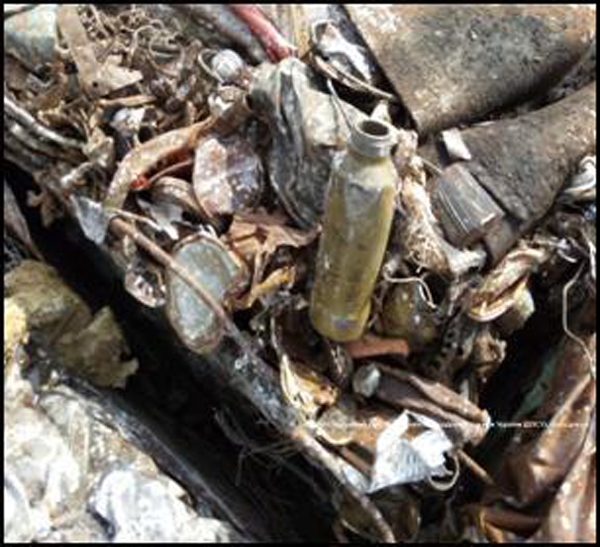The union phenomenon of the two Romanian states, Moldova and Romania, is more than just an initiative of a group of NGOs, the Unionist Platform Action 2012.
The unionist coalition is merely one of those tools with which the voices asking for the country’s reunification may be heard and as we have observed at the unionist march which started from Chisinau and headed towards Bucharest, the number of those who sang the national anthem having a flag in their hands was quite impressive[1].
Certainly, every international event implies both costs and benefits. Inevitably, we need to address both aspects in order to look at the event from a real perspective.
At the international level, the European Union is facing a crisis concerning the administrative efficiency, to which external factors contributed, such as the economic crash in 2008 and Russia’s actions in Eastern Europe in the past two years. Although the organization’s enlargement wave was stopped, the union of the two Romanian states would imply a territorial and population increase in the EU[1], but mainly would attract new economic benefits, especially in terms of agriculture[2]. Private investors from the West could thus invest in new plain region which has huge potential for productionbut lacks effective technological capability to produce at the European standards.
Beyond all these, the security risks in the Eastern area of the EU draw skepticism among foreign investors which could be able to contribute to the regional development. Discussions on this issue are ample, but certainly both for Europe and for the West, the unification of the two Romanian states would definitely imply considerable economic advantages. The only part dissatisfied with such a scenario would be Russia, which would thus lose „a buffer zone” between its borders and the Euro-Atlantic community. However, history follows its normal course of events, and what has to happen, will eventually happen.
At a national level, Romania would obtain both benefits and costs after the reintegration of the two countries, if we are to look at things from a pragmatic perspective. Unlike the rest of the EU states which would benefit from the Unification only from economic aspects (the emergence of new consumer markets), the advantages for Romania are supplemented by territorial reunification, much desired by generations.
If we are to talk about the costs which this phenomenon implies, these are of two kinds: from the regional development perspective and in terms of security. Regarding the first issue, the GDP per capita in the Republic of Moldova in 2014 was $ 3.500 while in Romania the quota reached $ 12.800[3]. Following the formation of one single state, Bucharest would tackle the additional task of helping the development of the new reintegrated region and of attracting additional funds for the agricultural area.
Regarding the security issues, they are divided into two categories as well: internal and external. The internal ones are caused by high traffic of armament of Russian production from across the Prut, as well as human trafficking, unstamped cigarettes or illicit trade of alcohol, problems for which Bucharest will have to adopt new conventional tactics in order to combat them. Externally, the main problems will be caused by Russia’s dissatisfaction, which among other maneuvers to destabilize the authorities that oppose its policies, will keep the separatist region of Transnistria as a pain in the neck forthe Unified Romania and implicitly for NATO, having high degree of influence in this area, influence which will not be easily eradicated.
As a conclusion to those mentioned, we understand that the unification between Moldova and Romania will involve many costs, but the benefits are much higher. As it can be observed in the last three years, there are civic actions campaigning for the Union on both sides of the Prut River, as well as actions of the Romanian government that may favor the realization of this phenomenon (the possibility to cross the border without a passport, only with an identity card, creating a SMURD center at Bălţi[4] and many others).
Moreover, our country’s historical duty is to assume this process, to benefit from the geostrategic and economic advantages and to resist to the challenges automatically attracted by the phenomenon so that in time we can talk about a country which is unitary in terms of identity and that will not face large discrepancies in regional development.
Autor: Radu Pătrașcu, pentru InfoPrut
[1]Having 3 million citizens and a surface of 33843,5 km2, , as per moldova.md, link : http://www.moldova.md/md/geografie/article accessed on August 16th, 2015
[2]The agricultural sector represents the main pillar of the state’s economy as per moldovagate.com, link: http://moldovagate.com/ro/article/show/224accessed on August 16th, 2015
[3]As per10 cele mai sarace tari din Europa in anul 2014, published by jurnalul24.ro on November 17th, 2014, link: http://www.jurnalul24.ro/10-cele-mai-sarace-tari-din-europa-anul-2014/article accessed on August 16th, 2015
[4]Vezi unde și când va fi deschis primul centru SMURD din Rep. Moldova, published by InfoPrut.ro on July 12th, 2015, , link: http://infoprut.ro/30254-vezi-unde-%C8%99i-cand-va-fi-deschis-primul-centru-smurd-din-rep-moldova.htmlarticle accessed on August 16th, 2015
[1]Marş unionist la Chişinău. Mii de oameni au cerut unirea Republicii Moldova cu România, published by antena3.ro on May 16th, 2015, link: http://www.antena3.ro/actualitate/mars-unionist-la-chisinau-mii-de-oameni-au-cerut-unirea-republicii-moldova-cu-romania-293856.htmlaccessed on August 16th, 2015



